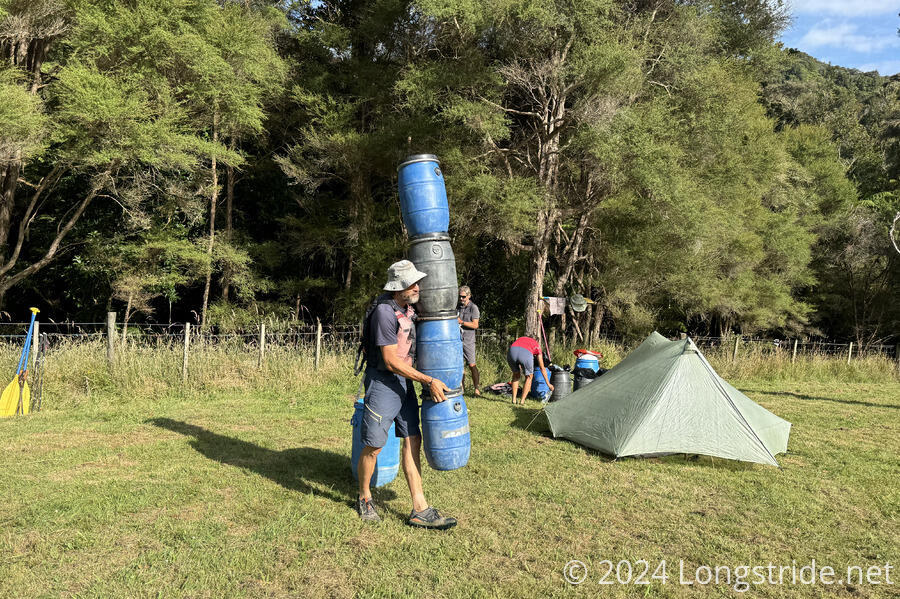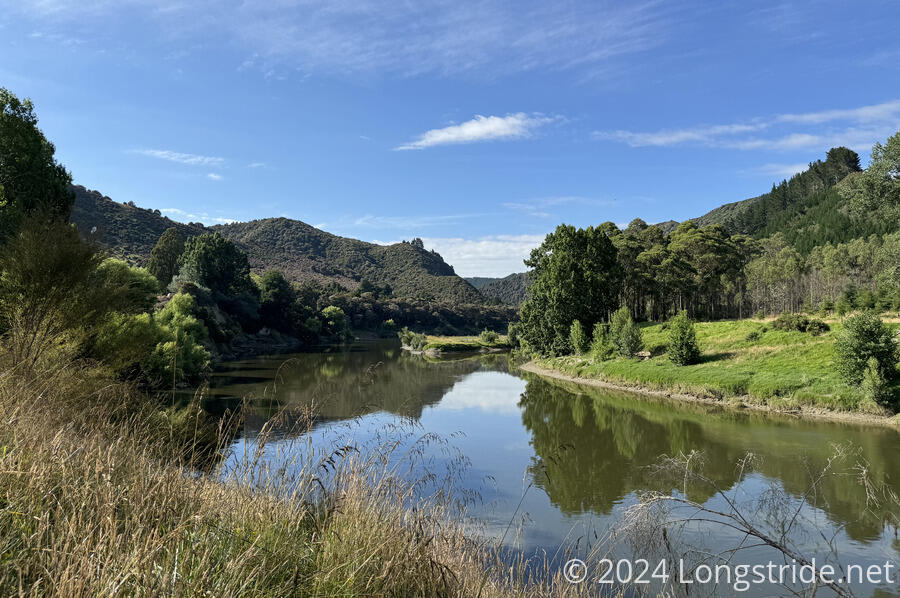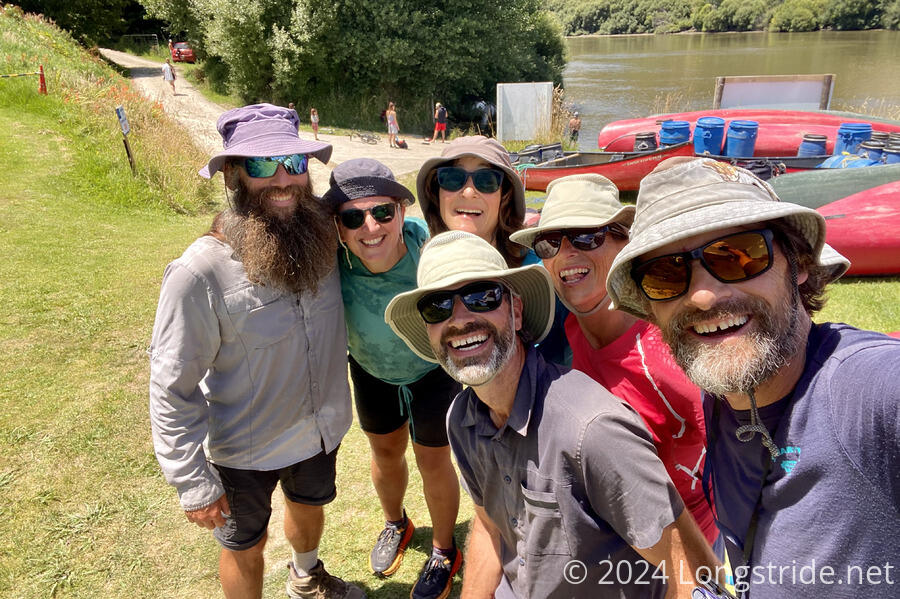Our last day on the Whanganui River brought us to the city of Whanganui.
Peter and Susana were up and ready to go quite early. With time to kill, Peter made a go of carrying all four of their small barrels at once, by stacking them on top of each other. This went about as well as you’d expect.
CareFree and I wound up leaving at 9:30, half an hour earlier than planned and a 90 minutes earlier than advised. And we clearly saw the effects of the tide: it was still coming in when we left, and we had to paddle fairly hard to keep our forward progress. If we stopped paddling, we started to drift backwards.
The river also widened significantly in sections, causing it to slow down from its usual speed. We had to work even harder there.
The most exciting part of the morning was when two jet boats passed us; their wake could swamp us unless we turned into the waves and paddled, as though they were mini-rapids.
Later, we scraped the bottom of the boat going over rocks in a very shallow stretch of the river. (We picked the wrong side when avoiding some debris.)
There was almost nowhere to stop; we just had our mid-day snacks while paddling.
All together, it was a pretty boring day. No rapids, just a calm river that required a lot of paddling. At least we did get the advantage of the tide going out once we did get closer to Whanganui. (Or maybe it was because we were paddling harder so we could be done with the river; it’s hard to tell.)
After just under four hours of paddling, we rounded a bend and, from a distance, saw Peter and Susana’s canoe heading towards shore, coupled with a distinctly Peter shout. Just a little while later, we reached the end of our canoe trip, at the Whanganui River Holiday Park’s boat ramp.
We (and Peter and Susana, and also Canadian couple Oliver and Melanie, who’d left just after us) hauled our boats out of the water and up to a landing. We unpacked everything from our boat, untied all the ropes, and put everything in a pile under our canoe.
Actually, no, we took a break in the shade after getting our stuff out of the boat, because the direct sun was now much hotter now that we were off the water and on land.
A sign stated that the holiday park’s facilities were only for (paying) guests, which answered a question I’d had for a few days: what were we supposed to do with the large amount of trash we’d accumulated. (Answer: carry it out.)
Over the next hour we were there, we helped several other hikers pull their boats up out of the water. There were plenty of high-fives passed around; I think we were all quite happy to be done with the river.
Leaving the holiday park, we continued to the center of Whanganui on sidewalks. (The long road walk will have to wait until tomorrow.)
After a brief stop at a gas station for ice cream and soda, we arrived at the Braemar House (and attached YHA hostel). Wanting quiet, we’d booked a room in the B&B portion of the building, rather than in the hostel (though the breakfast part of the B&B appears to be a separate option).
We were glad we did, because one of the hikers decided to cook dinner for everyone staying at the hostel, and as per his Spanish tradition, dinner didn’t start until late.
We got showers, and did some planning for the next section, three days to Palmerston North, which is almost entirely road walk. Because it was recommended to take two extra days of food for the river trip (and somehow, despite that being five days of food when we expected it to be a three day river trip), we both had nearly enough food to make it to Palmerston North, needing only a small top-up in Whanganui (which we’ll do tomorrow on our way out of town) and Fielding, along the way.
Our current major concern is the Tararura Range, after Palmerston North, which is notorious for its difficult trail and bad weather. (The recommendation is to take an extra two days of food in case sheltering in place becomes necessary.) The weather forecast for when we expect to be there is not great. But that’s still a week away. We’ll figure it out later.


